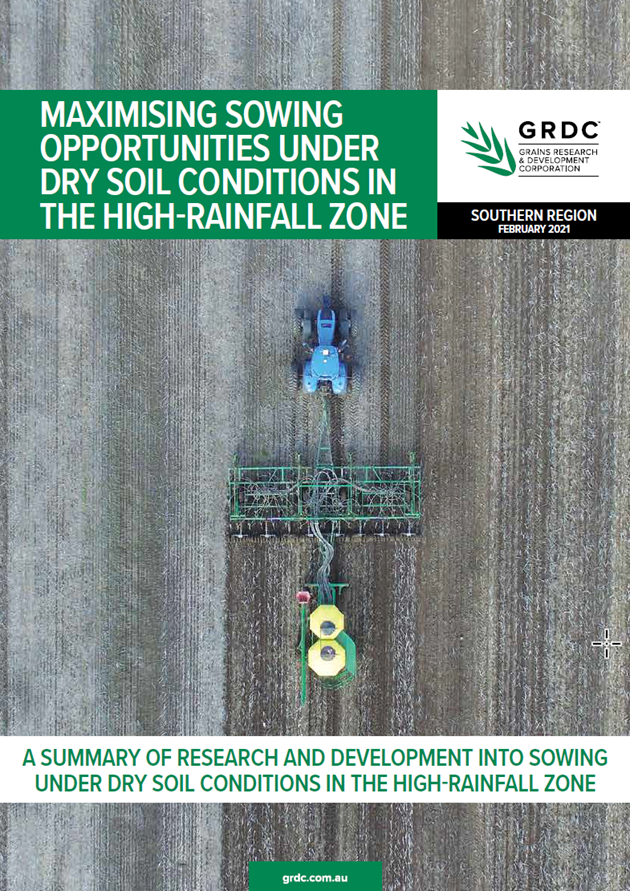Maximising sowing opportunities under dry soil conditions in the high-rainfall zone
Maximising sowing opportunities under dry soil conditions in the high-rainfall zone
Published: 5 Feb 2021
In the high-rainfall zone (HRZ), dry sowing is a risk management strategy that can be used to increase the chance of establishing crops before soils become too wet to sow and too cold for vigorous early crop growth. Dry sowing capitalises on sowing opportunities before the break of the season, which allows crops to begin germinating immediately following break-of-season rainfall.
As a consequence, dry-sown crops can be days, or sometimes weeks, ahead of those sown after the break of season, especially in large cropping programs and/or operations with limited seeding capacity. Dry-sown crops germinate when the ground is likely to be warmer, promoting early vigour and reducing the likelihood of crops becoming waterlogged. Earlier establishment also provides a longer growing season, ultimately enabling crops to set higher yield potential. With the general reliability of winter and spring rainfall in the HRZ and the ability to adjust in-crop management to the unfolding season, higher yield potential is usually translated into increased yields and greater profit potential.
Download PDF
Region: South
GRDC Project Code: COR1912-003SAX,

